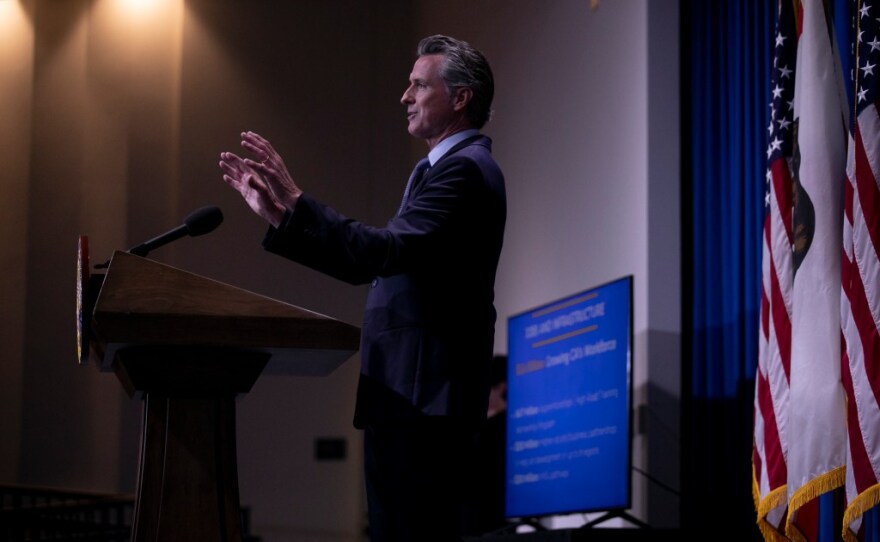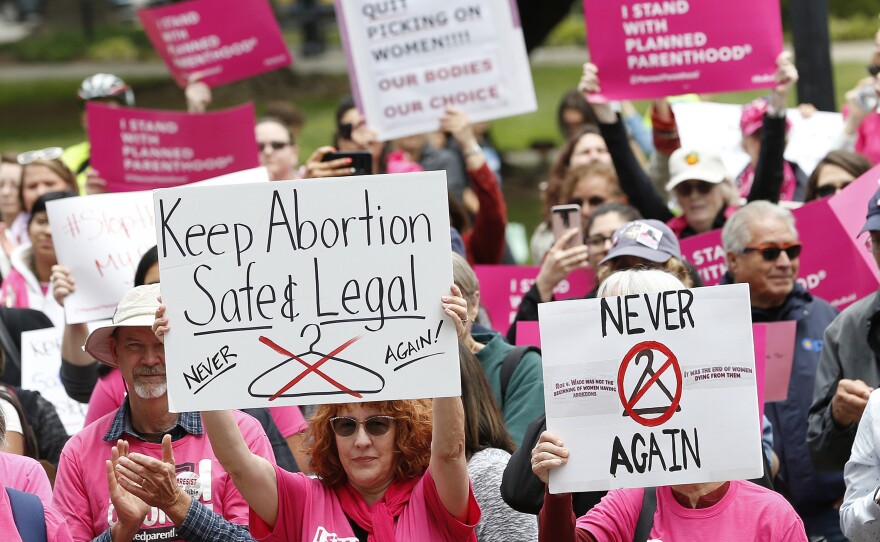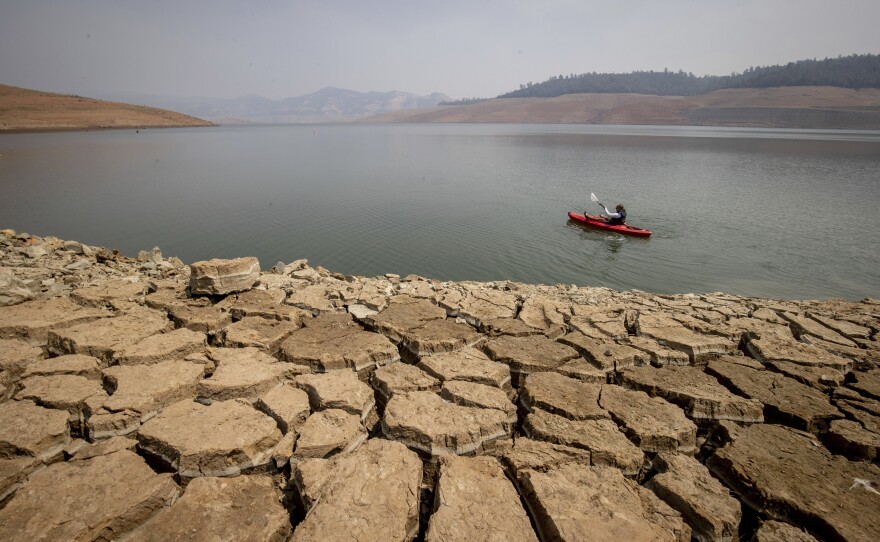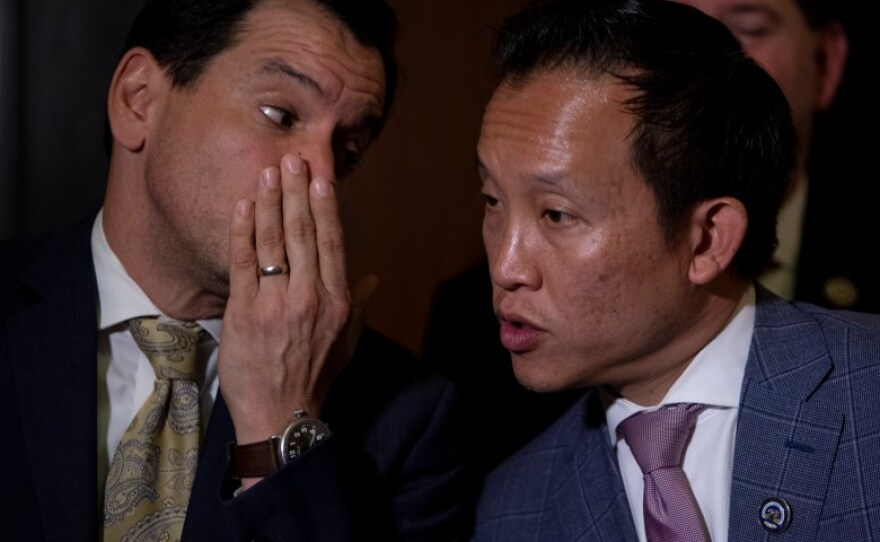Another coronavirus variant spreading like wildfire, and another huge state budget surplus: In some ways, 2022 is off to a similar start as 2021.
That could carry over to the state Legislature’s new session that starts today. In addition to the pandemic and surplus, California is dealing with some of the same big issues it has long grappled with — including housing and climate change.
“Our challenges continue to be the challenges that we have started and built momentum to work towards,” Senate President Pro Tem Toni Atkins, a San Diego Democrat, told CalMatters.
The difference? Looking at key issues more through a lens of equity, she said.
The state Assembly’s agenda shares those priorities, said Assembly Speaker Anthony Rendon, a Lakewood Democrat. Access to health care will be another focus: “We’re proud of where we are as a state, but we need to make sure that everybody in the state is covered.”
Where will things look a little different? The state Capitol complex is undergoing renovations, which means the “Bacteria Bear” is safely in storage for now.
The public and press will be allowed to attend in person, but due to COVID, access and seating will continue to be limited, masks and social distancing will be required and meetings will continue to be livestreamed. “We had hoped that as we go back, we’d be through the pandemic, but it hasn’t gone away,” Atkins said. “We’re going to have to continue to bear that in mind.”
There’s also the makeup of the Legislature itself. Following the redistricting process after the 2020 census, state Senate and Assembly district lines have been shaken up — and a number of lawmakers will be lame ducks this session because they’re not running for re-election in 2022.
Here are four themes to watch in the new legislative session:Cash rules
Compared to the $76 billion surplus from 2021, California is projecting a $31 billion surplus in the general fund, plus $20 billion in Proposition 98 funding for education.
The windfall is fueled, like last year, with tax revenue and federal funds. In addition, the November cap-and-trade auction generated $732 million, according to the Legislative Analyst’s Office.
In his budget proposal that is due by Jan. 10, Gov. Gavin Newsom has vowed to include more than $350 million to stop organized retail thefts, plus more money for dyslexia programs after authoring a children’s book on his own battles. He’s also hinted that he’ll include another round of stimulus checks.

Neither of the spending priority lists put out by Senate or Assembly leaders mention a stimulus check. Instead, they are framing the budget around a more inclusive economic recovery, and a more equitable economy.
Atkins said California’s economy is strong, but that wealth needs to be put to work.
“Those at the top are doing better than ever before, and that’s good for California in terms of our revenue,” Atkins said in an interview. “But as strong as the economy is, we face a homelessness crisis that you see every day in every corner of the state. And we know how hard it is for everyday, ordinary families to get by.”
The Senate plan builds on 2021 programs, including targeted relief such as the child tax credit, Earned Income Tax Credit and small business aid.
Senate and Assembly leaders also say they will seek to put more money into K-12 schools and higher education and to maintain the state’s reserves — “to protect the progress we are making from future downturns,” Atkins said. Last year, the Legislature was able to maintain $25 billion in reserves.
“As strong as the economy is, we face a homelessness crisis that you see every day in every corner of the state. And we know how hard it is for everyday, ordinary families to get by.”— Senate President Pro Tempore Toni Atkins
Rendon said that the budget surplus would enable California to “rebuild infrastructure in every corner of the state.” Meanwhile, Senate Republicans are calling for $3.3 billion to be spent on water projects, most for the contentious Sites Reservoir.
Expending one-time funds on infrastructure would help the Legislature avoid exceeding the Gann Limit, which requires that when the state hits a spending revenue threshold two years in a row, the excess money must be reimbursed to taxpayers or spent on schools. Revenue spent on building reserves and paying off debt is excluded from the limit.
Jason Sisney, Rendon’s budget advisor, noted that the Gann limit did not kick in last year, despite the historic surplus.
Assembly Budget Chairperson Phil Ting, a San Francisco Democrat, told reporters last month that with less money than last year to expand programs, the Legislature is likely to employ more creative one-time funding measures, including on transportation and transit, which didn’t receive as much funding in 2021.
“We’re definitely not back towards normal, but as we sort of come out of the pandemic a little bit, it’s not exactly clear where the best investments are and where the biggest impact is,” Ting said. “This is what the budget process is for. We have from now ’til June to really identify where we can make the biggest impact.”
And while there is a budget surplus, Rendon said one challenge this year is to make sure that the Legislature is fiscally responsible, and that big and small cities alike get their fair share.Guns and abortion
In the final weeks of 2021, two hot-button issues reemerged and landed squarely on the legislative agenda.
While California already has some of the nation’s toughest gun control laws, some are tied up in court. So Newsom went after guns and tied the issue to abortion.
He took a page from Texas’ playbook after the U.S. Supreme Court allowed that state’s ban on abortions after six weeks of pregnancy to stand in a December ruling. Newsom vowed to work with state lawmakers and Attorney General Rob Bonta — whom he appointed — to draft a bill that would allow private citizens to sue anyone who manufactures, distributes or sells illegal assault weapons or “ghost” guns, modeling it after Texas’ unusually structured abortion law.

The Texas abortion law has also prompted advocates and lawmakers to double down on abortion access in California.
A task force appointed by Newsom is recommending measures to make California a “sanctuary state” for abortions, including helping to pay for the procedure, along with travel, lodging and other costs for women who come to California because their states limit access.
Potentially, that could be tens of millions of dollars in state taxpayer money. If the U.S. Supreme Court effectively repeals Roe vs. Wade next summer, advocates say that could lead to 26 states immediately banning or severely limiting abortions. California would then become the closest state with broad abortion access within driving distance for 1.4 million women.Other issues
On other issues such as housing and climate change mitigation, legislative leaders said they plan to see through the investments they made last year.
That includes more affordable housing for families, as well as more permanent and temporary supportive housing for homeless people. To figure out what’s working and what’s not, Rendon said incoming Assembly Housing Committee chairperson Buffy Wicks, an Oakland Democrat, will review accountability of state programs on housing, rent relief and homelessness.
“We’re kind of hesitant to change our approach drastically,” Rendon said. “We’ve invested again, $12 billion over two years. Rather than continually changing our ways of dealing with homelessness, if there are mid-course corrections that need to be made then we should do that.”
As part of bolstering California’s safety net, both chambers plan to continue investments in public health. Legislators are also expected to revisit single-payer health care — one of Newsom’s campaign promises — and a plan to create an “Office of Health Care Affordability” to set cost targets for health plans, hospitals, physician groups and prescription drugs.
Advocacy groups have called on Newsom to lower deductibles before Medi-Cal will pay the costs of health care. Others have asked the Legislature to ensure that federal funds from the proposed Build Back Better bill boost programs for seniors and those with disabilities.
Progressives and labor groups also plan to push to restore emergency paid sick leave for COVID-19, which expired Sept. 30. SEIU California says that additional sick leave is even more important with shortened quarantine requirements for health care workers who are “being called to sacrifice and risk our lives again” despite the surge fueled by the omicron variant.
Children are also a priority area, including investments in mental health resources for students and to address learning losses caused by the COVID-19 pandemic. State Sen. Nancy Skinner, a Berkeley Democrat, plans to introduce a bill to create savings accounts of as much as $5,000 for children whose parents died from the virus. Also, it’s likely that lawmakers will revisit a highly-charged debate that has led to death threats previously: Whether to narrow or eliminate the personal belief exemption from the vaccine mandate for K-12 students and staff.
Rendon, who was part of the California delegation that attended the United Nations Climate Change Conference in Scotland in November, said the Assembly also plans to ramp up its efforts to meet the state’s 2030 climate goals, including lowering carbon emissions. Rendon also said there would likely be more focus on single-use plastics, building on last year’s bills.

Atkins said the Senate plans to continue finding ways to prevent wildfires and addressing drought, water and sea-level rise.
State water agencies have also recommended updated water use efficiency goals for water suppliers: 55 gallons per person per day by 2023, declining to 47 gallons per day by 2025, and 42 gallons by 2030. To take effect, the standards would need to be adopted by the Legislature.
Also in 2022, the conversations around law enforcement and criminal justice reform are likely to continue, including another attempt to reform cash bail after voters in 2020 overturned a more sweeping law. Laws passed in 2021 included allowing a state commission to decertify police officers for wrongdoing, and limiting police use of rubber bullets and other less lethal weapons at protests and demonstrations.
Assembly leaders also say they plan to increase oversight at the problem-plagued Employment Development Department, including a strike team plan to help Californians receive their unemployment benefits.
Finally, legislators could reconsider any of the 66 bills that they passed but that Newsom vetoed. But there’s little discussion of doing so. It takes a two-thirds vote of both the Assembly and Senate to override a veto, and that hasn’t happened since 1980.
Hellos and goodbyes
Say hello to your new districts, and goodbye to some lawmakers.
Following every census, state legislative and congressional boundaries are redrawn to account for population changes. On Dec. 27, the state’s independent redistricting commission certified its new maps.
The commission drew the lines from scratch without taking current district lines or incumbents into account. As usual, that means there will be some musical chairs as legislators compete against fellow incumbents drawn into the same district, try to appeal to voters in a new district or decide to run for higher office.
So far, 10 legislators have announced that 2022 will be their last session and they won’t seek re-election, while seven others hit term limits. And three — Democratic Assemblymembers Ed Chau of Monterey Park in Los Angeles County, David Chiu of San Francisco and Jim Frazier of Fairfield — have already resigned, so there will be special elections to replace them.

Rendon said that not having a full slate of Assembly members can be difficult, but that he hopes all those seats are filled as soon as possible.
“It’s difficult from the standpoint that they’re friends, it’s hard to see them go,” said Rendon. “At the same time, we’ve had a tremendous amount of turnover, and that’s brought on freshmen, and opportunities for people like Mia Bonta, Akilah Weber and Isaac Bryan. The freshmen have a lot to offer as well, and the turnover also offers opportunities for new chairs and leadership.”
Rendon also reaffirmed that he isn’t planning to step aside early: “I’ve got a job to do, and I’ll do it until 2024.”





